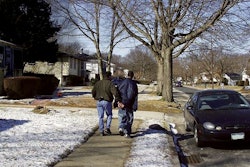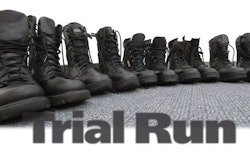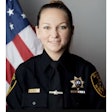Since 9/11 the burden of preventing another terrorist act has fallen hardest on local law enforcers. Along with efforts to ferret out vulnerabilities in the critical infrastructure and harden local targets, they have been charged with finding ways to gather intelligence and investigate potential threats.
Counter-terrorism and anti-terrorism are difficult tasks made even harder by the operational style that exists at almost every level of policing and in nearly every agency-that of withholding, rather than sharing, intelligence. The intelligence disconnects also exist between state and local agencies and those at the federal level.
And even the formation of multi-agency counter-terrorism task forces has failed to bridge the gap between federal law enforcement and the intelligence community and state and local police. Worse, even greater gaps exist at the local level, between police agencies, the fire service, and other public safety and first-responder organizations.
The Office for Domestic Preparedness, a branch of the Department of Homeland Security, has identified what it believes is an approach to remedy many of the problems inherent in gathering, analyzing, and sharing information among agencies that at first glance appear to have unrelated missions and diverse operating styles but are all vital to the prevention of and response to terrorist acts.
This approach is epitomized by the Terrorism Early Warning group, a Los Angeles-based, regional, multi-agency, multi-disciplinary task force that cuts across jurisdictional and disciplinary boundaries. ODP is preparing to award millions of dollars in grants to 30 high-threat urban areas in the hope that they will copy L.A. County's example.
Networked Approach
L.A. County's Terrorism Early Warning group was the brainchild of two L.A. Sheriff's Department officers who saw a threat in the rhetoric of a then little-known Islamist radical named Bin Laden. It was August 1996 and Osama had just issued his first fatwa, urging his followers to conduct global terrorist attacks against the United States and its citizens.
Sgt. John P. Sullivan and Dep. Larry Richards of the LASD watched as the face of terrorism changed and realized that the small criminal conspiracies that had been the hallmark of most terrorist incidents were probably a thing of the past. The emerging threat appeared to be coming from complex networks.
Sullivan and Richards knew two things: that the only way to deal with a terrorist network was to create a counter-terrorism network and that information sharing among agencies would be the key to preventing and reacting to terrorist attacks. L.A. County's Terrorism Early Warning (TEW) group was born.
The first TEW meeting was held in October 1996. Included in that meeting were representatives from the LASD, the FBI, the Los Angeles Police Department, the law enforcement branch of California's Office of Emergency Services, and from several academic and research institutions. The following month the group added representatives from the fire service, public health, public works, and neighboring law enforcement agencies.
Initially, L.A. County's TEW aimed to develop relationships that allowed each agency to share information. The TEW's ultimate goal was to fuse different intelligence disciplines, share information, investigate emerging threats, create scenarios of different types of attacks, train to respond to those attacks, and provide tactical support to responding agencies.
Sullivan and Richards laid out a strategy and began creating a management framework, establishing partnerships among participating agencies and disciplines. It was easier said than done.
The kind of cooperation among police agencies called for by the TEW plan was almost unheard of. Most agencies operated according to the classic stovepipe model, where information flows up and down the hierarchy but rarely outside the walls of the agency. Sullivan and Richards planned to turn that idea on its head. Theirs would be a formidable challenge, second only to addressing the fact that Los Angeles County-with its 4,000 square miles, 10 million people, 88 cities, 45 municipal police departments, 38 fire departments, one health agency, and 80 hospitals-is one of the most target-rich areas in the country.
L.A. County's TEW began with monthly meetings at which a small cadre of members shared intelligence about possible threats. Eventually, the group began to develop a set of playbooks that provided information for responding to specific threats, such as biological or chemical events, and for suicide bombers.
They also created target folders (now called Response Information Folders) that provided information on various types of threats at specific locations, such as tourist spots, airports, and theme parks. These folders included management plans for each location, maps, resource lists, and a recommended response for dealing with an attack.
False Alarms and Drills
L.A. County's TEW group had its first test when it predicted in the summer of 1998 that anthrax attacks were coming to Los Angeles County. That summer the TEW released an Emergency Preparedness Bulletin on terrorism awareness and, on December 12, 1998, published a preliminary policy advisory on response to weapons of mass destruction and anthrax. The attacks started five days later. Although the attacks were eventually determined to be hoaxes.
The group ran its first field test in 1999 during "Westwind," a weeklong chem-bio exercise that integrated local, state, federal, and military first responders. TEW members provided intelligence and potential threat information to the agencies involved in the exercise.
A few years later, the TEW provided the same type of support during Y2K and later that year to agencies whose officers were assigned to work the Democratic National Convention. The anthrax hoax, Westwind, Y2K, and the DNC were significant successes for the fledgling TEW group, which had operated without funding and only meager recognition from the public safety community.
That all changed on September 11, 2001.
A New Era
L.A. County's TEW geared up immediately on the morning of 9/11, with representatives from local, state, and federal agencies operating out of LASD's sophisticated Emergency Operations Bureau.
Since then, the TEW has retained a permanent, albeit partial, staff with the need for more personnel in the future. It now has office space at LASD's Emergency Operations Bureau. And where it previously limped along with no funding at all, a trickle of money has begun to flow in that will enable the group to begin strengthening and refining its work, and to field test new technologies and provide training to member agencies.
The TEW's success at facilitating cooperation and information among different agencies and disciplines has made it a model for the nation. "There is no one entity in charge of the TEW," says Sullivan. "We collaboratively work together as a network. The Sheriff's Emergency Operations Bureau coordinates the process and we facilitate it. We make sure notifications are made and the right people are linked together. We adopted a network because we realize that we are increasingly facing networked adversaries."
It may seem strange that the structure of the counter-terrorism TEW borrows so much from the structure of the terrorists it aims to thwart, but Sullivan believes such an architecture is essential for efficient information sharing and response.
"We don't have to have a large standing organization that costs lots of money for each individual threat," Sullivan explains. "We can plug in modules of what we need. If we need a biological response, we incorporate the public health community. If we need a chemical response, we incorporate the Haz-Mat community. If we have a conventional bomb response, we bring in the appropriate people. If it's a cyber response, we reach out to cyber specialists.
"The TEW integrates the response community from the local through federal echelons. We have small police agencies, the fire service, right up through the FBI and the Bureau of Immigration and Custom Enforcement. We also did something unique. We've incorporated, right from the first meeting, outside subject matter experts to keep us from getting tunnel vision."
The makeup of the TEW also gives its members an important worldwide perspective. "If we only look at events at the local level, it will be too late. We have to see trends emerging on a global level if we are going to provide indications and warnings locally," says Capt. Mike Grossman, who heads the LASD's Emergency Operations Bureau.
One of the TEW's most important functions is to strengthen the link between the FBI's Joint Terrorism Task Forces and regional first responders. The TEW is the information hub that connects its member agencies, and that allows information from the federal level to flow rapidly through the TEW network.
California currently has a total of five TEWs at varying stages of development in Orange County, Sacramento, Riverside/San Bernardino Counties, Los Angeles, and San Diego. Nationally, TEW groups have been established in Pierce County, Wash., and Tulsa, Okla. And there are much bigger plans in the works.
Secretary Tom Ridge of the Department of Homeland Security is pushing the development of TEW groups in key American cities. The programs are to be funded by grants.
Homeland Security says the 30 high- threat urban areas identified in the UASI program will be encouraged to use their funding to replicate the TEW model as part of their local strategies. ODP has designated the LA TEW as its National Resource Center for the project. The center will help each area representative understand the TEW model and how it can best be implemented in each region.
According to ODP officials, locating the center in Los Angeles will allow program participants to see the model first-hand, and in some cases, get directly involved in its work. Training and assistance at the national center will be provided by the Memorial Institute for the Prevention of Terrorism, an Oklahoma City based non-profit organization that was formed after the bombing of the Alfred P. Murrah Federal Building in 1995.
The Big Picture
Although the Los Angeles TEW existed long before 9/11, its mission was to address the intelligence gaps that existed at the state, local and federal levels. Sullivan and Richards saw that only a networked counter-terrorist organization could combat a networked terrorist organization.
By creating partnerships with the relevant disciplines and agencies in the public and private sector, they created such a network. With the support of Homeland Security and its Office for Domestic Preparedness, their concept will be duplicated across the country within the next few years.












